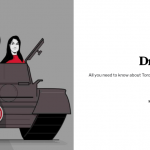Students among leaders in coverage of Halifax municipal election
What happens when two journalism programs team up in an election year? In the case of HRMVotes.ca, as Eric Mark Do found out, the result was student coverage of a municipal election that arguably rivaled some established media in terms of reach and impact.
What happens when two journalism programs team up in an election year? In the case of HRMVotes.ca, as Eric Mark Do found out, the result was student coverage of a municipal election that arguably rivaled some established media in terms of reach and impact.

October 20, 2012 – Faculty Advisor Fred Vallance-Jones and the King’s reporting students at NSCC on election day. Photo: Mackenzie Scrimshaw
A student-produced news site proved to be one of the go-to sources of information online on the Halifax Regional Municipality election last weekend.
HRMvotes.ca was a joint initiative between The University of King’s College and the Nova Scotia Community College and provided in-depth coverage of the HRM election using different media platforms, both in advance and in real-time on election night. The web traffic the site received was on par with at least one established news organization covering the same event and the students broke news on an important election story, all the while steadily providing a stream of news to Twitter.
Over 100 journalism students from King’s and over 50 radio & television arts students from NSCC were actively involved in the project. They produced written articles, video features, interactive maps (one during the election and one after) , and profiles of the candidates. Under the hashtag #UKCNSCC, you could also follow their coverage on Twitter. On election night (October 20), a 90-minute live webstream—new to NSCC—accompanied the coverage.
King’s journalism instructor Fred Vallance-Jones co-ordinated the project and said both of the schools saw the election as “an opportunity to create a niche laboratory on a real story that was happening in real time, with real deadlines, and real results.” There were more than 20 live news stories being edited on election night—and by the end of it, some students had logged 15 hours that day alone.
The students’ coverage involved breaking stories as well. HRM had an online voting system for this election, but as Dylan McAteer reported, some residents’ votes had not counted because the voters did not click the “confirm” button. HRMvotes was the first to report it. “It was a good little story and that was being picked up by other media outlets after,” said Vallance-Jones. “It was kind of the icing on the cake for us.”
Success factor
Whether this project was successful or not can be measured by awareness, numbers, and even the non-reaction it received from Halifax’s media community.
The candidates were absolutely aware of the project, Vallance-Jones said. “We knew it was a success because we were getting calls from candidates who were complaining they didn’t like their profiles.”
Three days after the election, the site had amassed 17,000 page views, more than 4,000 visits, and almost 3,000 unique visitors to the site. “That traffic compares favourably to the traffic that went to one of the daily newspapers sites here,” said Vallance-Jones.
While the collaboration between the two schools was unique, the other local media didn’t cover the initiative he said. Vallance-Jones offered a reason for why that was: “I think to the students’ credit, they were regarded as competitors.”
OpenFile Halifax had been covering the election before OpenFile founder Wilf Dinnick decided to suspend operations of all city sites at the end of September. Editor Neal Ozano said in an email that by looking at HRMvotes.ca and the material that was on there, it must have had a lot of traffic. “I can honestly say that it's what I wish OpenFile Halifax could have ended up being for the election, had we not gone on hiatus before that,” he said. “That's exactly what we would have wanted our elections page to look like.”
[node:ad]Student experience
King’s journalism student Mackenzie Scrimshaw was assigned to cover one of the mayoral candidates, Mike Savage, as part of her second-year reporting techniques course. Savage ended up winning.
Compared to other journalism assignments where students interviewed their peers or looked for stories in the community, this was their first hard news story, said Scrimshaw. “It was the first time we were covering an event that other media outlets were covering, so that added an element of realism to it.”
She interviewed Savage at his campaign headquarters, and was in scrums with other reporters while getting her stories. A memorable moment for Scrimshaw is when she stood in the multipurpose room of the Savage’s headquarters, the Dartmouth Sportsplex, on election night. The unofficial results had come in saying that he had won.
“The moment that he walked through the doors with his wife and his children, all the TV cameras were suddenly on him,” she said. “And all the reporters gathered around the door and it was kind of this moment like, “Wow this is happening. This is real. It’s time to go.”
Putting together a student reporting team
Some of the students had only been in their programs for five weeks before participating in the project. “The first-year students were able to actually in only—literally four-to-five weeks—play an active role in producing the web broadcast,” said NSCC faculty and television production instructor Stephen Melanson.
From King’s, there were various groups of students involved. Students from the one-year bachelor of journalism program wrote profiles of the candidates; the third-year research students wrote riding profiles; and the second-year multimedia reporting class reported on every district and all the mayoral candidates on election day, in addition to writing articles.
The pre-produced videos were created by NSCC students and each took about two weeks to make. Students from both schools played a part in producing the 90-minute live-webstream, which took about four weeks of planning to execute. Melanson said the faculty might consider doing more live webstreaming now. During the project, the students had more access to NSCC’s equipment and broadcast facilities than in previous years.
“This was the probably largest video or special project that we have done in the history that I’ve been with the program, in 18 years. It was massive in scale,” said Melanson. “It really did expose the students to a lot of different technology. The learning experience for them was also magnified just because of the scale of the project.”
Melanson said NSCC took some time to deliberate before agreeing to the partnership—for concerns that the students may not be able to handle it—but at the same time, an election only comes around every four years. “Something this big you’re not going to get a chance to do every year,” he said. “So I think from that point of view it was important that we consider it. We went for it, and it worked really well.”
The idea of covering the elections started over a year ago at King’s. Conversations between the schools started in the spring, and intensified in August, said Vallance-Jones. “While it may be fun, it’s an incredible amount of work,” he said. “We do it because it gives our students an opportunity to learn that they might not otherwise have…I could’ve done a lecture on covering election night but they wouldn’t have learned nearly what they learned through this.”
Scrimshaw agreed that it was an valuable learning experience. She added, “It was something that the public got to see instead of it just being for our prof to mark it.”




